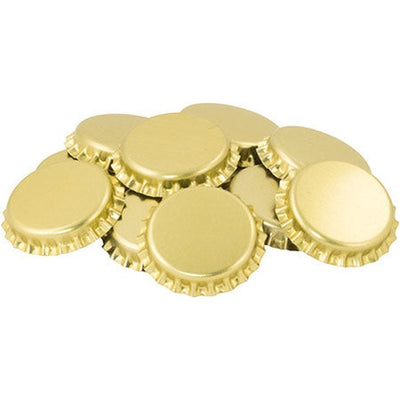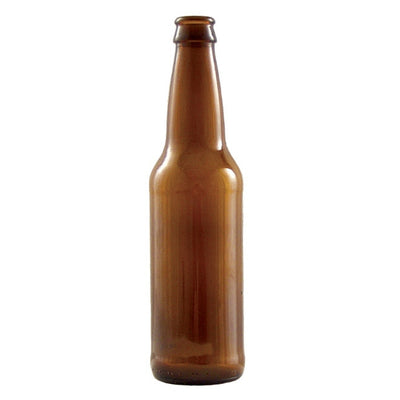The Tapcooler Counter Pressure Bottle Filler is an all-new, easy-to-use bottling device!
Allows you to perfectly bottle beer from a forward-sealing beer faucet without CO2 loss
Purge bottles and headspace with CO2 to keep oxygen out, prolonging the life of your beer
Perfect for bottling for competitions, sending bottles home with friends, or to take on the go!
Easy to setup and super easy clean.
For a Duotight-compatible filler, check out the NukaTap Counter Pressure Bottle Filler
The Tapcooler Counter Pressure Bottle Filler is the best way to quickly and easily fill bottles of homebrew directly from your draft system. No need to mess with alternate liquid lines or other complex contraptions. Just slide the Tapcooler into any forward sealing faucet (such as a Perlick, Intertap, or Nukatap) hook up a CO2 line, and you're ready to roll. Whether you're filling bottles for a competition or just grabbing a couple to share with your friends, the Tapcooler is quick and easy to use, and will help maintain the flavor, aroma, and carbonation level of your beer so it tastes the same out of the bottle as it would out of the tap.
A counter pressure bottle filler is the best tool for bottling, as the bottle is under pressure while the carbonated beer flows in, which results in a minimal loss of the CO2 in solution.
The Tapcooler improves upon the standard counter pressure filler, as it plugs directly into your draft faucet. Other counter pressure solutions require you to hook up a separate liquid line, which is not something standard draft systems have setup and requires additional time to prep. With the Tapcooler, you can have it setup and ready to go in less than a minute! The Tapcooler design is also advantageous because after you are done filling the bottle, it stays in place hooked up to your faucet while other fillers require you to set the unit aside and pick it back up again for the next bottle.
Connecting your CO2 line is also a snap. You can either hook up directly with a 3/16" push-fit line, or connect your line to the included barb fitting. You can also purchase the gas ball lock adapter (KEG881), which gives you the ability to attach a gas-in disconnect directly to the filler unit. We highly recommend picking up this optional accessory!
The Tapcooler is designed to fill beer and CO2 from the bottom of the bottle through the telescoping bottle connection tube. First CO2 flows down into the bottom of the bottle to flush from the bottom up. Next you open the tap and beer flows down the same tube, filling from the bottom up. The result is a more effective purging of oxygen and little to no foam during the filling process.
The telescoping bottle connection tube allows you to fill bottles as small as 4.5" tall and up to 12.5" tall. You can fill taller bottles with the Tapcooler, but the tube will not reach the bottom of the bottle, which can lead to some splashing. When filling wide mouth containers, a bottle stopper of suitable size and with a 9 mm hole can be used as an adapter.
The filler features a push button CO2 purge valve, which allows you to purge the bottle of oxygen before and after filling. It also includes an adjustable pressure relief valve, giving you the ability to change the filling speed. The pressure relief valve also acts as an overflow port for excess beer or foam to escape when filling.
One of the best features of the Tapcooler is that it's super easy to clean. Cleaning other bottle fillers can be a chore and take lots of time. The Tapcooler comes apart easily and allows you to clean all parts effectively and easily after each use.
All metal parts that come into contact with your beer are made from 304 stainless steel. The barb and ball lock CO2 adapters are made of aluminum.
Finally, the Tapcooler comes chock full of optional accessories that will adapt your filler perfectly to your setup. See the "You Might Also Need" section below for list of accessories!
Forward-Sealing Faucet Compatibility
Tapcooler fits Intertap, Nukatap, Ultratap, Vent-Matic, and Perlick 600 series faucets. These fillers can be converted to fit Perlick 500 series with the optional tap connector (KEG887). Cannot be used with ventilated beer taps, i.e. non-forward sealing beer taps.
Features:
Hooks up directly to any forward sealing faucet for quick and easy use.
Quick setup and easy maintenance.
Perfect for bottling for competitions, sending bottles home with friends, or just to have some bottles on the go!
A range of accessories are offered for more range and easier use!
Purge bottles with CO2 before and after filling for longer lasting beer!
Pressure relief valve allows for control over filling speed and allows excess foam to escape for the perfect pour every time!
Made from 304 stainless steel
Easy to use and clean!
Read more less

























































